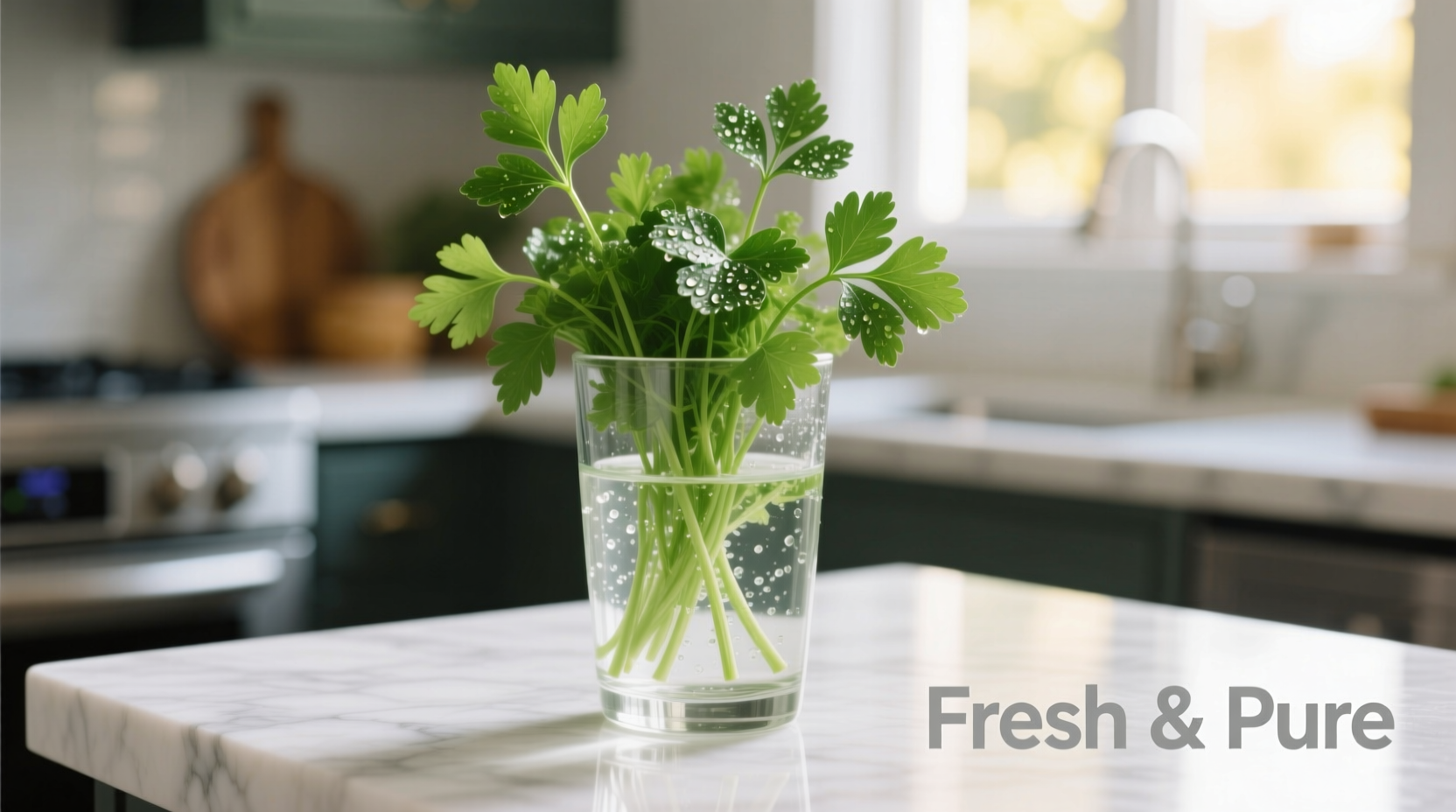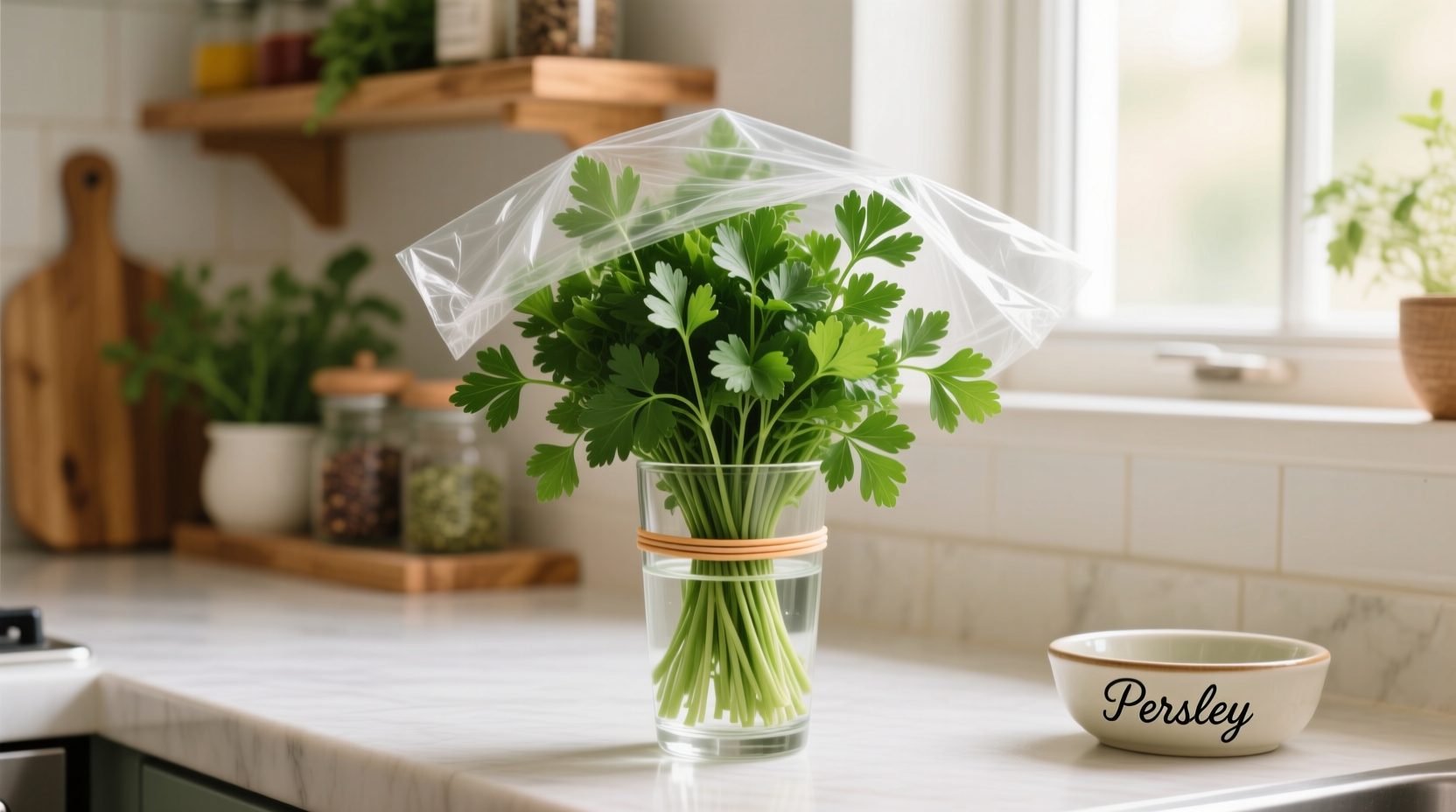Nothing ruins a vibrant tabbouleh or fresh chimichurri like limp, yellowing parsley. As a culinary professional who's worked with herbs daily for over 15 years across multiple Michelin-starred kitchens, I've perfected storage methods that maintain parsley's delicate flavor and texture far beyond grocery store expectations. The secret lies in understanding parsley's biological needs—it's not just about keeping it cold.
Why Most People Fail at Storing Parsley
That plastic clamshell container from the grocery store creates a moisture trap that accelerates decay. University of California agricultural research shows that excess moisture combined with poor airflow causes rapid ethylene gas buildup, triggering premature wilting and spoilage in leafy herbs like parsley. Professional kitchens avoid this by controlling three critical factors:
- Moisture balance (not too wet, not too dry)
- Temperature consistency (34-38°F ideal)
- Minimal physical handling
Immediate-Use Storage (1-3 Days)
For parsley you'll use within a few days, treat it like cut flowers:
- Trim ¼ inch from the bottom of stems
- Place upright in a glass with 1-2 inches of cool water
- Cover loosely with a plastic bag
- Store at room temperature away from direct sunlight
This method works because it mimics the plant's natural hydration process. The USDA's Agricultural Research Service confirms that herb stems continue absorbing water even after harvest, maintaining cellular turgidity that prevents wilting.

Standard Refrigerator Method (2-3 Weeks)
This professional technique consistently delivers the longest freshness:
- Wash parsley gently in cool water and spin dry in salad spinner
- Wrap in single layer with slightly damp paper towels
- Place in airtight container with lid slightly cracked
- Store in high-humidity crisper drawer of refrigerator
The key is the paper towel's moisture-wicking action. Cornell University's Food Science Department found that maintaining 90-95% relative humidity while allowing minimal airflow extends herb shelf life by reducing transpiration stress. Check and replace paper towels if they become saturated.
Extended Freezing Options (Up to 6 Months)
For long-term storage, freezing preserves parsley's flavor compounds effectively:
| Method | Preparation | Storage Duration | Best For |
|---|---|---|---|
| Blanched Freezing | 30-second boil, ice bath, pat dry | 6 months | Cooked dishes |
| Oil Cubes | Chop, mix with olive oil, freeze in trays | 4 months | Sautéing, sauces |
| Dry Freeze | Spread whole sprigs on tray, freeze solid | 3 months | Garnishing, quick cooking |
Research from the National Center for Home Food Preservation shows that blanching before freezing preserves up to 90% of parsley's volatile flavor compounds compared to 70% with dry freezing. The brief heat treatment deactivates enzymes that cause flavor degradation during frozen storage.
Critical Mistakes That Shorten Parsley's Life
Avoid these common errors that accelerate spoilage:
- Storing in original packaging - Traps ethylene gas and moisture
- Washing before long-term storage - Excess moisture promotes bacterial growth
- Temperature fluctuations - Opening refrigerator frequently causes condensation
- Storing near ethylene-producing fruits - Apples, bananas, and tomatoes accelerate decay
How to Revive Slightly Wilted Parsley
If your parsley has begun to soften but isn't slimy:
- Submerge in ice water for 15-20 minutes
- Gently spin dry in salad spinner
- Re-wrap with fresh damp paper towels
- Store in airtight container as described previously
This works because the cold water rehydrates plant cells through osmosis. The University of Massachusetts Extension notes that most herbs can recover from mild wilting if addressed before cellular breakdown occurs.
When to Discard Parsley
Don't risk using compromised parsley. Discard immediately if you notice:
- Slippery or slimy texture
- Yellow or brown discoloration beyond natural fading
- Mushy stems that bend easily
- Sour or ammonia-like odor
Food safety experts at the FDA warn that slimy herbs can harbor harmful bacteria like Salmonella and E. coli, especially when stored improperly.











 浙公网安备
33010002000092号
浙公网安备
33010002000092号 浙B2-20120091-4
浙B2-20120091-4